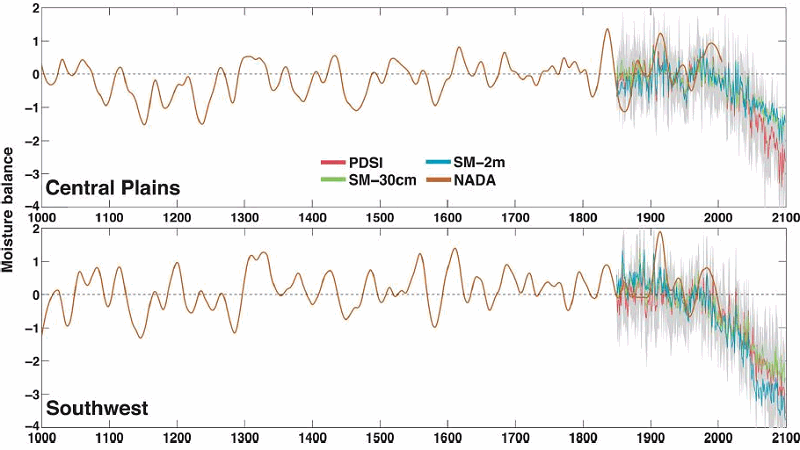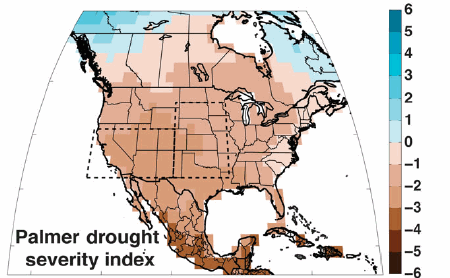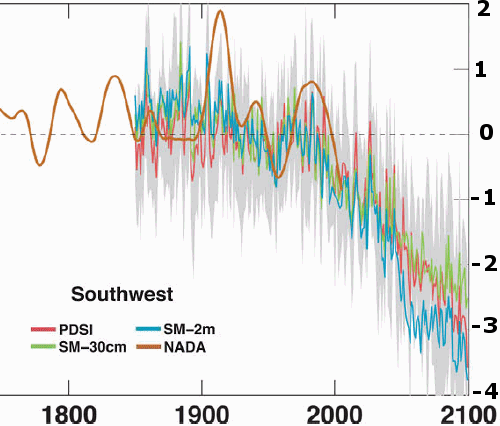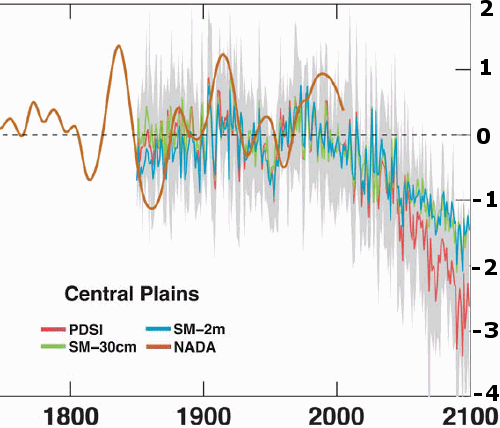
Scientists taking a hard look at America’s climate future foresee long-lasting droughts later in this century unlike any in the last thousand years. The primary blame belongs to global warming from human activities, according to a study released today in the new open-access journal Science Advances.
Climate forecasts for the whole globe are well established. The scientific community accepts that when you consider the planet as a single pixel, adding carbon dioxide to the atmosphere inevitably makes the world hotter.
However, climate forecasts for smaller regions of the world– like individual continents– are more of a cutting-edge exercise. Models differ and uncertainties are important. But in this new study a team of three climate scientists—Benjamin Cook (NASA), Toby Ault (Lamont-Doherty Earth Observatory) and Jason Smerdon (Cornell)—made regional forecasts that project intense drying in two large parts of the U.S.: the Central Plains and the Southwest.
Cook’s team started by taking a group of 17 leading computer climate models and running simulations of the climate from 1931 through 2099 that include rising average temperatures. They generated two alternative futures: 1) a “business-as-usual” simulation in which nothing much changes in our global greenhouse gas emissions; and 2) a more moderate scenario in which we make some progress in shrinking emissions.
They asked the models specifically to predict the level of moisture in the soil in the Central Plains and the Southwest. They used three different measures, including the Palmer Drought Severity Index. The PDSI is used by many agencies and is a common target in modeling studies. (After three years of scant rains, the Bay Area is sitting at a PDSI value below –4, or extreme drought.)



